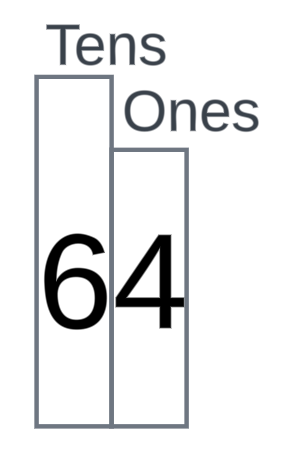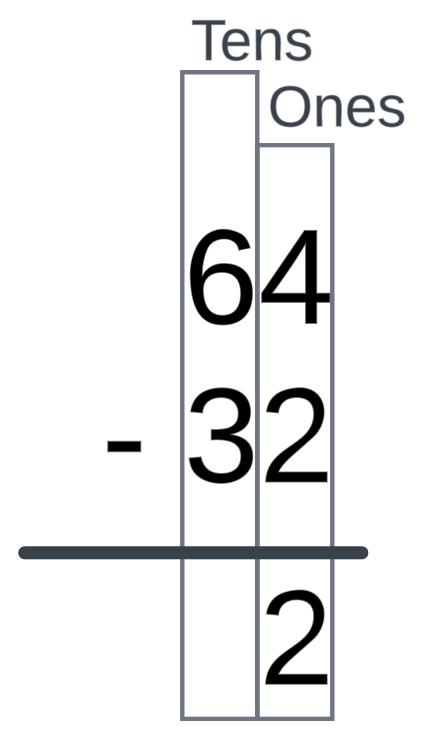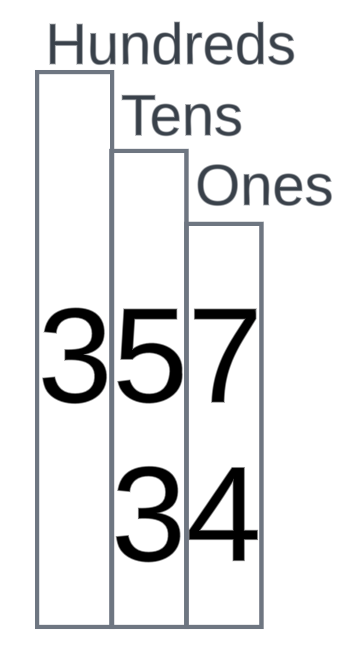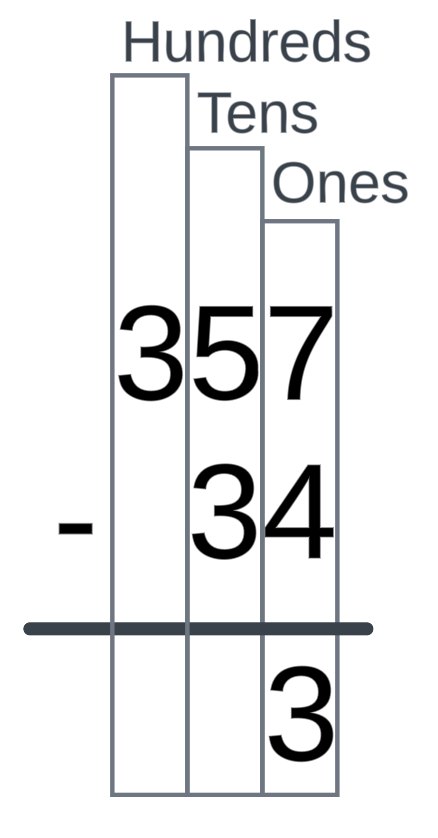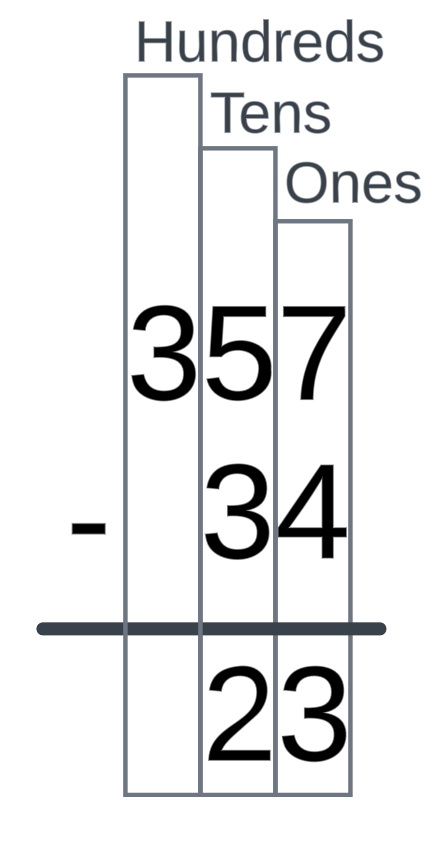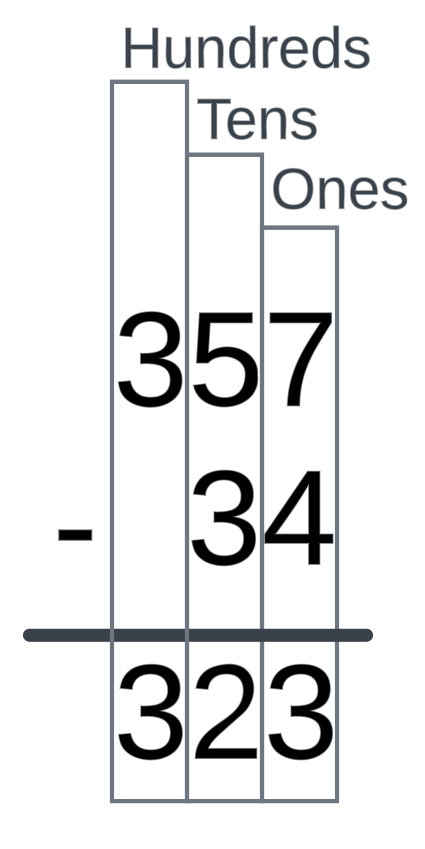Introduction
In this lesson, you will learn the steps of subtraction. When doing subtraction with numbers that are too large to do in your head, there are steps you can follow to help you do the subtraction correctly.
These videos illustrate the lesson material below. Watching the videos is optional. In the video called "Steps for Subtraction," only steps 1-3 are relevant to this lesson.
Steps for Subtraction
- Stack by place value with the biggest number on top.
- Regroup when needed. This is needed when the top number is smaller than the bottom number in a place value column.
- Subtract in columns by place value, starting on the right and going left.
Here are a few examples to illustrate these steps.
Example 1
\(9-3\)
Step one instructs you to stack by place value with the biggest number on top. Place 9 on top of 3, since 9 is the bigger number. There is only one digit in each number, so both numbers will be placed in the one's column. Your equation should look something like this:

Figure 1
Now that you have the problem set up, you can subtract. The answer is 6.

Figure 2
Example 2
\( 56-42\)
Arrange according to number size and place value. 56 is the bigger number so it must be on top of 42. There are two digits in each number, so you will align the 6 and 2 in the ones column and align the 5 and 6 in the ten's column.
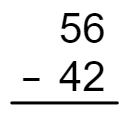
Figure 3
Subtract the columns by place value, starting on the right and moving to the left: \(6-2=4\) and \(5-4=1\). The final answer is 14.
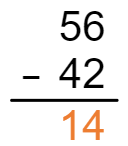
Figure 4
Regrouping
Regrouping is the second step in the subtraction process. It isn’t always necessary, as in the examples above, but it is an important step to understand.
Example 3
\(25-7\)

Figure 5
In this example, step one was already performed by lining up the numbers by place value (ones on top of ones) with the largest number on top. You might consider adding a zero in front of the 7, just to see how the numbers line up.
For step two, notice that 5 is greater than 7. To make this equation solvable, you need to regroup by borrowing from the tens column.
When you borrow from a column, you don’t just add one to the original number. You add the full value of what you borrow. Since you are borrowing from the tens column, one 10 should be added to the ones column. You will do some simple addition to add the borrowed 10 to the 5 ones. This gives you 15 in the ones column (refer to Figure 6).

Figure 6
Now you can solve this equation. Start on the right (in the ones column) and move to the left.

Figure 7
The final answer is: \(25-7=18\).
Example 4
\(452-273\)
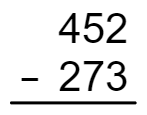
Figure 8
The numbers are already arranged as instructed by step one. Now, determine if the problem needs regrouping. Notice in the ones column that 2 is smaller than 3, and in the tens column 5 is smaller than 7. Both columns will need to borrow from the column on their left (see Figure 9).

Figure 9
As always, start with the ones column. Just as the first example, add 10 to the 2 in the ones column, making it a 12. Consequently, this will turn the 5 in the ten's column to a 4. Note that you haven’t changed the number; you’re just rearranging where the numbers are according to place value.
Next, do the same thing for the tens column that you did for the ones column. Borrow from the number to the left. In this case, that means borrowing from the hundreds column. Since you are borrowing from the hundreds column, you get ten groups of 10 added to our tens column. Do some simple addition to add the borrowed group of tens to the original 4 tens. This gives you 14 tens (Figure 10).

Figure 10
Move on to the next column. \(3-2\) works as a problem, so you will simply solve the rest of the equation. Therefore, \(452 - 273 = 179\).

Figure 11
Things to Remember
- The steps of subtraction:
- Arrange numbers according to size and place value.
- Regroup as needed.
- Subtract place values—right to left.
- When borrowing from a column, you don’t just add one to the original number. You add the full value of what you borrow.
Practice Problems
Evaluate the following expressions:- \(64 - 32 = ?\) (
- \(357 - 34 = ?\) (
- \(963 - 69 = ?\) (
- \(884 - 500 = ?\) (
- \(800 - 263 = ?\) (
- \(577 - 284 = ?\) (
- \(954 - 597 = ?\) (
Need More Help?
- Study other Math Lessons in the Resource Center.
- Visit the Online Tutoring Resources in the Resource Center.
- Contact your Instructor.
- If you still need help, Schedule a Tutor.
